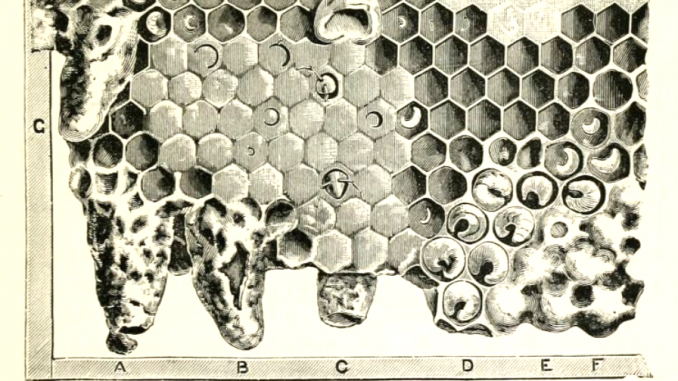
Alan Wade
In this month’s Bee Buzz Box introduction, we learnt that not only do different species of honey bee vary greatly in their metrics but that other factors, such as nutrition and geographic variation, come into play. For example, honey bee colonies working under pollen deficient conditions, will raise some smaller bees as they can gain the same pollen reward as larger bees, in the process saving the colony a goodly part of its energy bill. Epigenetics to the fore!
Honey bees and their combs
A catacomb is an underground, often labyrinthine passageway.
Putting aside the labyrinth catacombs, with their myriad passageways and tales of burial of the ancients, we now venture into the darkened nest of the honey bee, a hidden domain, to explore its hive furniture. This is the miracle structure we call honeycomb, one that an impartial observer would have sensibly reclassified as honey and brood comb.
It is quite well known that bees construct bee comb comprising hexagonal wax cells. They are leakproof containers tilting upwards at a slight angle, in fact 130: this ensures that collected nectar does not dribble down the comb face.
But how large are these cells, the authentic kind you might find in the honey bee woodland tree hollow? Not unsurprisingly their size varies with bee provenance. African races of the honey bee, for example, have a smaller comb footprint – both in terms of the amount of comb and their cell size, raising more bees per square decimetre – than do their European cousins.
The fact that there is no consistent pattern of cell size differences for comb purposed to raise workers, queens, drones or to store honey and pollen amongst different honey bee species is quite understandable. Getting honey bee vital statistics – akin to getting film star bust, waist and hip measurements – seems like a good place to start.
A menagerie of comb structures and sizes
We begin by examining the natural comb cell size characteristics of a representative sample of different honey bees (Table 1). The giant honey bees, by way of example, employ the same sized cells to raise workers and drones but use rather smaller cells to store honey and pollen.
| Cell characteristics (mm) | Apis mellifera ligusticai | Apis cerana ceranai | Apis floreaii | Apis dorsataiii |
| Worker cell width | 5.497 ± 0.004 | 4.825 ± 0.003 | 3.06 (2.8-3.2) | 5.54 ± 0.16 |
| Worker cell depth | 12.088 ± 0.040 | 9.595 ± 0.066 | 9.18 (7.5-10.0) | 16.79 ± 0.65 |
| Drone cell width | 6.626 ± 0.005 | 5.627 ± 0.009 | 4.74 (4.0-5.1) | 5.54 ± 0.16 |
| Drone cell depth | 13.776 ± 0.038 | 10.533 ± 0.144 | 13.0 (13.0) | 16.79 ± 0.65 |
| Honey cell width | 5.738 ± 0.008 | 4.922 ± 0.004 | 3.06 (2.8-3.2) | 6.25 ± 0.39 |
| Honey cell depth | 16.857 ± 0.064 | 15.499 ± 0.062 | 9.18 (7.5-10.0) | variable |
Table 1 Cell dimensions for better known honey bees.
In an elegant doctoral study, Underwoodiv reported on the Nepalese flight performances of Apis laboriosa, Apis cerana and Apis mellifera and their ability to regulate their flight efforts in response to expected gains and associated costs as demonstrated by their being presented with different sugar level rewards. Size matters. Underwood’s observations are corroborated by a study undertaken by Fred Dyer and Tom Seeleyv that compared differences in thoracic flight temperatures in Apis florea, Apis cerana, Apis mellifera and Apis dorsata with ambient air temperatures.
Bees, as well as the cells in which they are raised, in all their guises are the size they are. Think particularly of the more primitive open-nested dwarf and giant honey bees where it is hard to conceive that each bee species, with their own comb with a characteristic cell (or bee) size, give or take a few millimeters, have not done so to optimise their chance of survival and nectar reward.
Let us now move on to examine many other issues associated with cell size, sticking to the Western Honey Bee we keep. Unless you have read up on bee comb ‘vital statistics’, you may be surprised to discover that that comb cell sizes in most kept hives differ from those found in wild comb.
Combing the archives
There are other factors, nutritional status of the colony and race apart, that impinge on the size of the bees we find in our common or garden bee hives. Principle among these is the size of the cell in most managed hives. By way of example old comb that has reared many generations of bees have markedly smaller sized cells. Each cell is lined with cocoons left by as many as one hundred emerging bees. The result, smaller bees. Comb turn over in the wild hive is likely different to turnover in a commercial hive as we interfere by regularly replacing combs.
Another example. Any beekeeper of long standing will have encountered drone laying queens as well as queenless colonies with laying workers. A tell-tale result is the presence of old worker bees accompanied by numerous small drones raised in worker cells.
More tellingly, however, is the fact that worker cells in free form comb, those that are constructed in a tree hollow – or indeed in a Warré or a top bar hive – are naturally a whole lot smaller than those raised on comb drawn from foundation supplied by beekeeping outlets. How this came about is the result of an historical accident.
We use foundation because it produces more regular and less wavy comb face sporting a lot less drone comb. However its manufactured footprint is considerably larger than that of natural comb, a fact that only those who are ‘wild about comb’ seem to appreciate.
While a swarm will always draw near perfect worker comb, any mature colony left to its own devices (think of bees that take up residence in the compost bin or roof cavity) will end up with more like 20% drone comb once well established. Framed hives supplied with worker based foundation will still repurpose some of worker cell matrix to drone comb but will end up with rather less, roughly 10%, drone comb.
The surprising consequence of this is that natural beekeepers run hives with smaller bees than are found in run of the mill Langstroth hives. But does this cell size difference matter?
Let us explore the facts. Having a larger army of smaller bees – assuming a queen is capable of laying more eggs and that the colony is capable of raising more bees to match the horsepower of an equivalent mass of rather larger bees – may make little difference to the survivability or the productivity of bees. A well-documented example of this occurring naturally is found in the small, cold adapted geographic race Apis mellifera mellifera of Europe and the British Isles. Its bee and bee comb varies regionally in all its body metricsvi. This tells us that natural selection and genetic drift are always at work, in lay terms bees adapt to their local environment and adjust their size and that of the cells that make up their comb accordingly.
It would therefore seems hard to imagine that bees can be engineered to perform better by upping the size of worker, and possibly also drone, cells. By any reckoning and as an example, the amount of honey that can be stored in a given sized frame, discounting the extra wax needed to construct smaller cells, will be unchanged as wax comprises a such a very tiny fraction of the total comb matrix.
So what is the take home message?
You can employ regular foundation and get larger-celled combs – and bigger bees – or you can let the bees produce their own smaller sized-cell comb. From a practical perspective there is really no choice. You either use foundation or let bees construct free-form comb. That is, of course, unless you were to manufacture your own foundation using dies conforming to measurements you took from local wild comb.
Honey bee comb cells packing density
So for beekeepers intent on keeping bees in much the same way as they would keep themselves – the bees, not the bedrooms of the ‘bushy’-beekeeper’s domicile – we find that tree hollow combs are very different to those found in well kept hives. For starters their combs are encompassed in frames rather than being suspended from the roof. Further wild honey bee colonies raise their worker bees in cells of variable size, most having a diameter in the range of 5.0-5.6 mm (generally at the smaller 5.0-5.2 end of the range). But irrespective of the question of desirable cell size – cells are much larger in frame hives – beekeepers have always had to contend with another comb related matter:
How many combs are needed to keep a good queen in full lay so that she never runs out of space?
This is a very practical matter as most beekeepers partition their hives so that there is brood raising zone – below an excluder – and a storage area (supers) above. Separation of hive space was a novel idea around 1880 when the queen excluder was invented.
Giving the queen room to lay, but not too much, is the hallmark of a competent beekeeper. To get this equation right, we need to know how many cells there are in a regular full depth Langstroth frame and how fecund the queen is. Does this mean that we have to count all the cells in a typical fully drawn comb, a formidable task, or ask Dr Google of whom none of us quite trust? We also need to hazard a guess as to how fast a queen is laying, an even more impossible task, though I admit to having watched a queen laying in a glass walled observation hive. It was then easy to do a back of the envelope calculation to ascertain her laying rate.
The better option, one often used, is to confine the queen to single drawn comb located in the centre of a brood nest and to count the number of eggs laid several days later. I pick on a number of 1800 eggs per day as this is the number often bandied about for a good young queen bred for productivity.
However to estimate the optimal size of the brood nest we need two other pieces of information. Comb occupancy, like a bird in the bush, is a moving target. Having chosen an estimate of a top line queen laying rate (1800 eggs/d) we now factor in the fact that workers take twenty one days to emerge from the point of lay, drones a few days longer. Further not all cells are available for a queen to lay into. Bees store honey and pollen adjacent to brood to provision bees as they emerge. It also then takes a day or two for nurse bees to clean out and polish cells from which bees have emerged to make them ready for the queen to re-lay in to.
Using the number of cells found on a sheet of foundation, scaled to fit inside a frame, is a pretty rough guide as to the number of cells per frame present. Bees always modify the imposed regular comb plan. A better option is to simply measure up a representative batch of cells in a given grid size and scale up the result to the total area inside the frame and gives us a more reliable estimate of cell density. Once the average diameter of a hexagonal cell (best estimated by measuring 10 or more cells) is determined, its total area can be calculated (Figure 1). This area divided into the total area of comb and doubled (to accommodate the two comb faces) provides us with an estimate of the number of cells per frame.
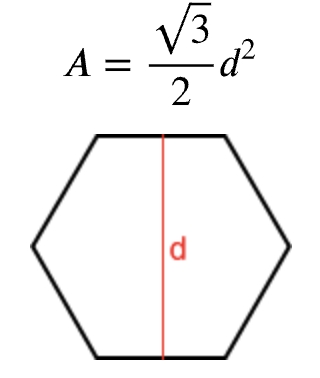
Figure 1 Estimating area of comb occupied by a cell based on its nominal side-to-side or centre-to-centre widthvii.
Simple algebra to the rescue: Area = length by depth. I sized up a few rows and a few columns of drawn combs and got a pretty consistent 75 x 42 count using the inside dimensions of a newly nailed up frame. This equates to 6300 worker cells (both sides) per frame. So a queen generating 1800 eggs a day, that is laying 1 egg every 48 seconds, will require exactly seven full depth frames assuming brood is raised in every cell and that the frame has near perfect comb.
Combs are never perfect. They have holes and are not always drawn down to the bottom bar, they are lined with many oddly shaped interstitial cells along the frame margins and there are always patches of comb where worker comb has been replaced by larger drone cells. Even ignoring the fact that a sizeable proportion of eggs are always cannibalised, the seven frame minimum requirement needs some upward adjustment.
Assuming a brood chamber is not crammed with stores, and that there is ample nectar ripening and storage space above the excluder, it would appear that a brood chamber needs to accomodate about nine good frames to avoid interrupting queen laying duties. If this is accepted as a reasonable assessment then we conclude that a single eight frame box won’t suffice. Of course single brood chamber operators routinely lift frames of sealed brood above the excluder or, do as I do, run double brood box chambers.
The origin of the queen excluder
Here it is interesting to reflect on the origins of the queen excluder and the notion of the compartmentalisation of the brood chamber and early notions of having separate space entirely devoted to curing of nectar and honey storage. These are perhaps best illustrated by C.W. Dayton’s musings on ‘contraction’, aka a chamber devoted to brood rearing: brood frames were confined to a special cage (Figure 2)viii:
Now, suppose you have a colony and I have a colony, and the honey-harvest begins about the 15th of June and lasts until the 15th of July, you may give your colony the freedom of eight frames all the time, and I (in accordance with contraction methods) will give mine the freedom of eight frames all the time until June 15th or 20th, when I contract the brood-space to five frames. Would not my colony be as rousing as yours at the time of contraction?
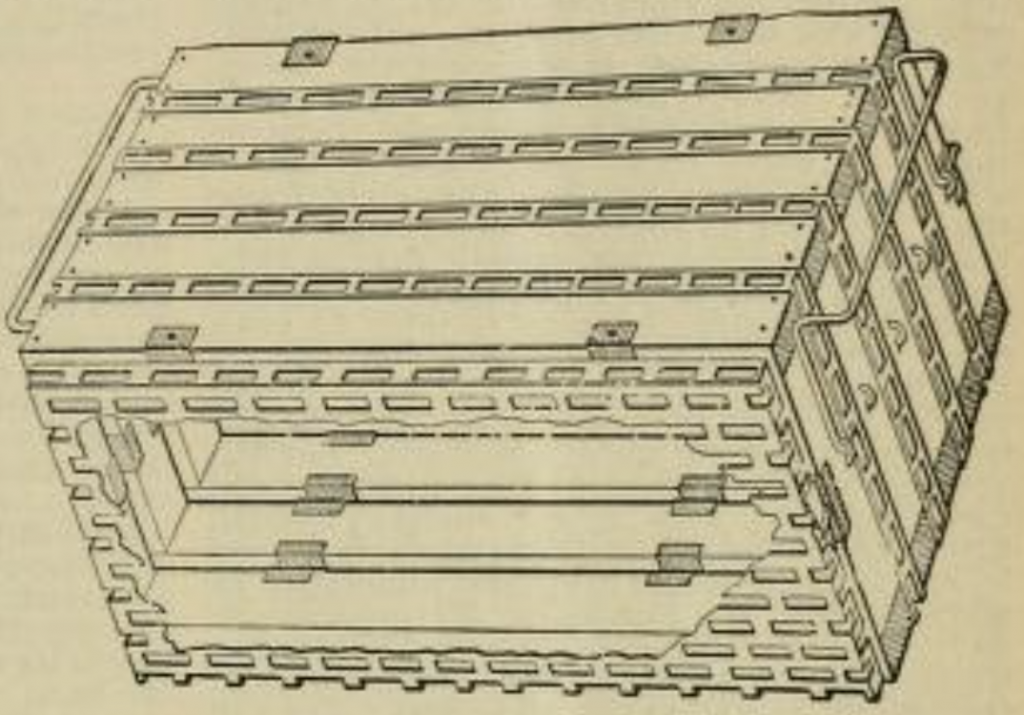
Figure 2 Dayton’s queen restrictor.
Other prominent purveyors of the queen excluder were Gilbert Doolittleix and a Dr Tinkerx both of whom recognised their facility in ‘compartmentalisation of hives into brood nest and storage zones’. They, however, used the queen excluder as we do, a simple divider of brood nest and honey supers.
But coming back to where we started we discover, as naïve bee owners, that the cell widths in a drawn comb we used to make these estimates from had cell diameters close to 5.7 mm. To find out more about the combs we actually employ, we need to examine the history of comb foundation manufacture.
The origin of comb foundation
Johannes Mehring’s 1857 invention of wax comb foundationxi came very soon after Lorenzo Lorraine Langstroth had patented his frame hivexii. Much needed then was comb that would fill out individual frames and that would avert the cross bracing that still besets the operation of top bar and Warré hives. However Mehring’s venture was not entirely successful. His comb foundation had only a basal hexagonal impression. This hardly encouraged bees to build straight rows of worker comb and it was found that bees too readily modified the cells in his foundation as drone comb.
Others followed and Amos I. Root’s 1876 wax foundation mill (Figure 3) produced foundation with raised cells walls. Foundation had come to stay as a key requisite of hive frame architecture.

Figure 3 AI Roots wax foundation mill (1876).
The number of cells for a given area of comb depends on the die press cell stamp size used to produce foundation, 5.73 mm centre-to-centre in the foundation I purchased online. The bees simply draw foundation to produce larger cells than those found in naturally drawn comb.
For different super depths, the estimated number of cells per frame can be scaled to the area of the comb available. Worker comb cell size in natural comb is considerably smaller (5.0-5.2 mm) – perhaps as large as 5.6 mm – and the number of cells varies widely (830-920 cells per 100 cm2)xiii, being at the higher end of the scale amongst African races of Apis mellifera. Frank Cheshire’s meticulous 1886 textxiv reports natural worker cell diameter of 5.08 mm (1/5″) and depth of 11.9 mm (15/32″); drone cell diameter of 6.35 mm (1/4″) and depth of 14.3 mm (9/16″) (Table 2), his attention to detail suggesting that natural cell diameters were well recorded by the mid 1880s.

Table 2 Frank Cheshire’s 1886 cell chart.
Chesire illustrates a foundation machine ( Figure 4) – possibly his own – of his era.
Message and Gonclavesxv correctly reported that Italian worker comb with a cell width (4.9-5.1 mm) and capacity (240-260 µL) was therefore considerably larger than that of Africanised comb width (4.5-4.6 mm) and capacity (175-195 µL). Knowing that African bees are only marginally impacted by Varroa, they concluded that European bees would be capped earlier and therefore be much less susceptible to the mite. Unfortunately this was wishful thinking. While wild bee populations are now known to recover several years after Varroa incursion, the effort to reduce cell size conferred no meaningful mite control outcome. Top bar and Warré colonies are just as susceptible as Langstroth hives to mite infestation.
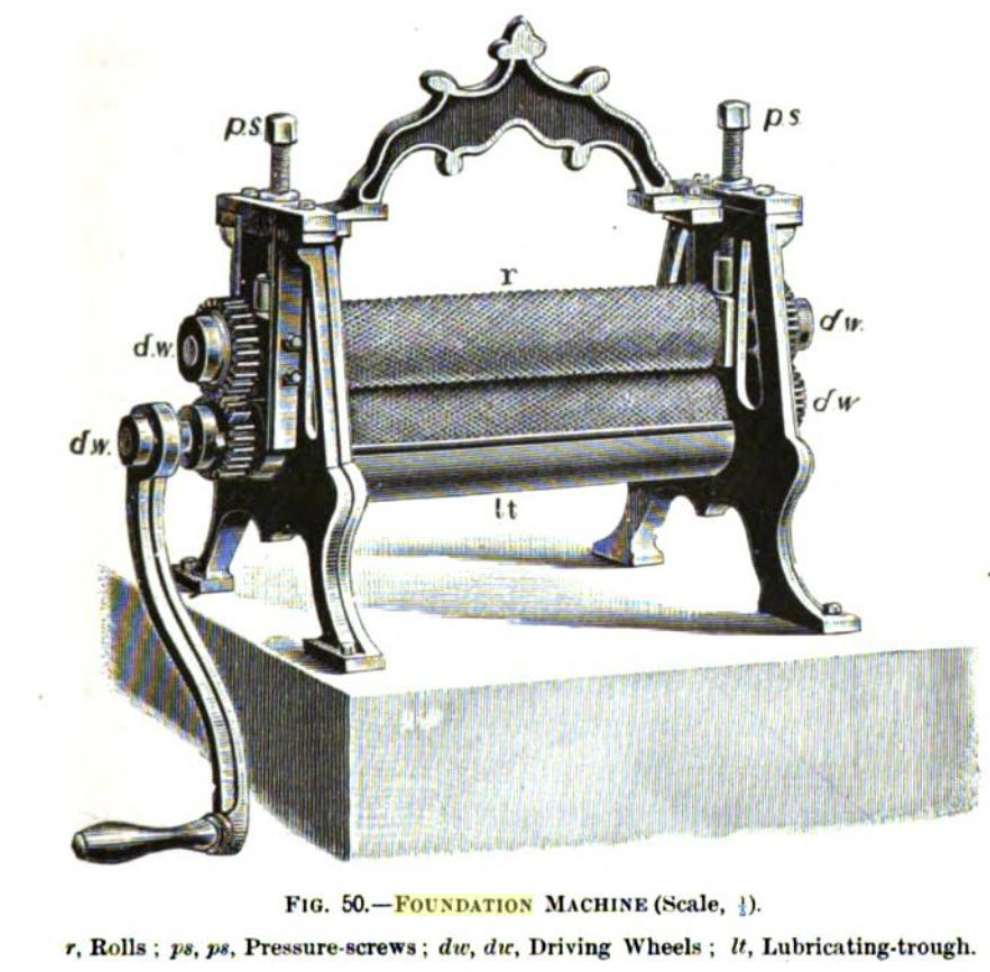
Figure 4 Wrung out and hung out to dryxvi.
But this is an aside. From the outset there was no effort to standardise manufactured foundation cell size, David Heafxvii unearthing wildly variable late 1890s to 1990 records (Figure 5) of dies set to produce foundation. He records historical measurements of natural cells size from authoritative investigators such as Tom Seeley and Mark Winston as well as recording mean (5.1-5.4 mm), minimum, maximum and median cell sizes in wild hives and from a number of Warré hives he took measurements from.

Table 3 Milled foundation cell sizes recorded by mainly 20th Century foundation manufacturersxviii.
The Warré equation
Warré hive comb depicted in Figure 5 shows the full range of cell types formed naturally. The worker cell count is 55 cells spanning the 280 mm top bar (5.1 mm average cell width): this is at the lower end of the range of cell size reported by David Heaf. I have taken this 5.1 mm cell width to be representative of naturally drawn comb in the local NSW/ACT Southern Highlands environment. Note the preponderance of drone cells on comb margins and queen cells started on one margin. The queen cells were temporary and were formed shortly after dequeening and immediate introduction of a caged queen.
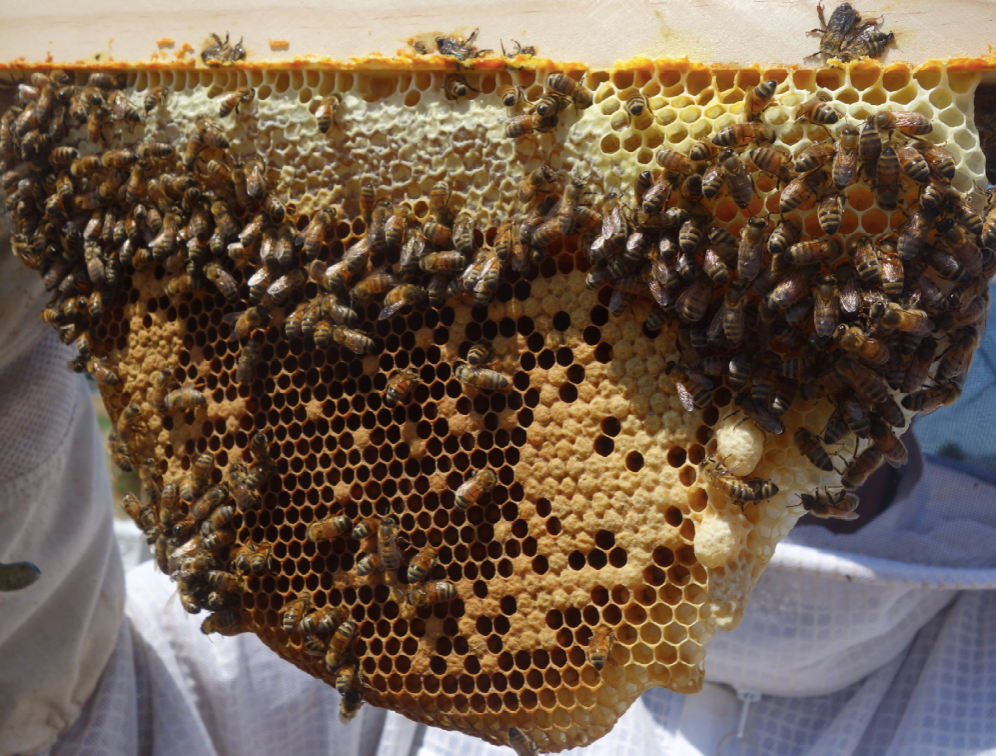
Figure 5 Warré comb showing different cell types: queen, worker and drone types showing stores kept in both worker and drone comb.
The amount of drone comb produced in the early stages of swarm occupation of a tree hollow is necessarily small – workers are needed to establish the colony – but can be quite high in large colonies and particularly at the margins of brood nests. There the influence of queen pheromones is much reduced. We know this as introducing a frame with a starter strip, in lieu of foundation, to a strong Langstroth colony will normally result in bees drawing nearly pure drone comb.
Bees expend a seemingly inordinate amount of energy and resources raising drones (and indeed also replacement queens) but we should see the willingness of bees to construct drone comb as part of the natural calculus of honey bee survival. It seems quite possible that bees make greater than normal use of the very limited amount of drone comb present in managed Langstroth hives or that they recruit drifting drones to compensate for apiarists desire to artificially limit their number. However limiting the amount of drone comb severely limits the number of drones a colony can raise.
But how much space does a highly fecund queen need to lay out uninterrupted in a top bar or Warré hive? A queen laying at the same rate in a Warré hive – those employing an open frame – would fill out roughly one face of fully drawn comb daily. Assuming a 20% of drone comb (drone cells have a diameter of 6.6-6.8 mm), we can calculate the relative areas of drone (6.7 mm centre-to-centre) and worker comb (5.1 mm centre-to-centre) in a naturally drawn comb: a back of the envelope calculation shows that, for a fully drawn out Warré comb (874 cm2 for two faces), this equates to 450 drone cells and 3103 worker cells per frame. With a queen laying rate of 1800 eggs per day and an average emergence of brood just over 21 days, a Warré hive would require a require a minimum of twelve brood combs making allowance for the fact that she will lay drone eggs.
Thus Emile Warré’s allocation of two eight frame brood chambers makes common sense, especially since the Warré hive normally comprises 2-3 chambers. This is corroborated be the fact that Warré hives rarely accommodate brood in more than two eight-frame chambers. And since bees have free range of all supers in both top bar and Warré hives there is little reason to assume queen laying will be restricted provided honey is regularly removed leading up to and during a honey flow.
Implications of changed cell size for beekeeping practice
A honey bee perspective
We might conclude that the production of comb foundation with cell size larger than found in naturally drawn comb is an accident of history, a legacy with which we now live. But where does altering the natural size of cells in honey bee comb leave the honey bee?
Firstly few bee species have been domesticated and only a handful of races of Apis mellifera and Apis cerana – occasionally others – have been kept in hives. Bees building their own nests, those not raised on manufactured foundation are entirely un-impacted. The real impacts on honey bees has been that of modified landscapes, mainly land clearing and human occupation, and changes in climate, all human induced.
An apiarists perspective
What has changing the size of cells meant for keeping bees? Claims that larger cells producing larger bees would be more efficient and thus produce more honey have been debunked. Contemporary research on the potential benefits of returning to natural smaller sized cell combs has similarly been unfruitfulxix. With the benefit of hindsight we can however dismiss Professor Baudoux’s Larmarkian based theory that larger honey cells and larger bees would necessarily increase bee productivityxx.
Sufficient to say is that bees readily adapt – within limits – to whatever comb and space is made available to them. However we should all acknowledge that the comb and bees we see in Langstroth hives are different to those that are found in hollow logs and wall cavities.
The choice of housing bees, the materials hives are built of and the type of comb the bees work with will always be the beekeepers prerogative. But giving the bees some say in their choice of domicile and furnishings – things like comb cell size and hive insulation – are the sort of considerations we should all take on board if our goal is to allow bees to work more naturally.
Readings
iYang, S., Deng, S., Kuang, H., Zhou, D., Gong, X. and Dong, K. (2021). Evaluating and comparing the natural cell structure and dimensions of honey bee comb cells of Chinese bee, Apis cerana cerana (Hymenoptera: Apidae) and Italian bee, Apis mellifera ligustica (Hymenoptera: Apidae). Journal of Insect Science 21(4):1 https://academic.oup.com/jinsectscience/article/21/4/1/6313200?login=false
iiKhan, M.S., Kaushik, H.d. and H. R. Rohilla, H.R. (2002). Nesting parameters and comb dimensions of the dwarf honeybee, A. florea F. at Hisar, India. Indian Bee Journal 64(162):12-19.(2002). https://www.researchgate.net/publication/327386902_Nesting_parameters_and_comb_dimensions_of_the_dwarf_honeybee_A_florea_F_at_Hisar_India
iiiBuawangpong, N., Saraithong, P., Khongphinitbunjong, K., Chantawannakul, P. and Burgett, M.D. (2014). The comb structure of Apis dorsata F. (Hymenoptera: Apidae): 3-dimensional architecture and resource partitioning. Chiang Mai Journal of Science 41(5):1077-1083. https://www.thaiscience.info/journals/Article/CMJS/10932954.pdf
ivUnderwood, B.A. (1990). The behaviour and energetics of high-altitude survival by the Himalayan honeybee, Apis laboriosa. PhD thesis, Cornell University, Ithaca, USA. 144pp. https://www.cabdirect.org/cabdirect/abstract/19910230590
vDyer, F.C. and Seeley, T.D. (1986). Interspecific comparisons of endothermy in honey-bees (Apis): Deviations from the expected side-related patterns. Journal of Experimental Biology 127(1):1-26. https://citeseerx.ist.psu.edu/document?repid=rep1&type=pdf&doi=fdffbcd28d23b1c5a3b6cee86a5407baeb2bd00c
viInternational Association for the Protection of the European Dark Bee (2021). What is Apis mellifera mellifera? https://sicamm.org/apis-mellifera-mellifera/
Bouga, M., Alaux, C., Bienkowska, M., Büchler, R., Carreck, N.L., Cauia, E., Chlebo, R., Dahle, B., Dall’Olio, R., De la Rúa, P., Gregorc, A., Ivanova, E., Aykut Kence, A., Kence, M., Kezic, N., Kiprijanovska, H., Kozmus, P., Kryger, P., Le Conte, Y., Lodesani, M., Murilhas, A.M., Siceanu, A., Soland, G., Uzunov, A. and Wilde, J. (2011). A review of methods for discrimination of honey bee populations as applied to European beekeeping. Journal of Apicultural Research 50(1):51-84. doi:10.3896/IBRA.1.50.1.06 https://sicamm.org/documents/Bouga.pdf
viiMath.net. Area of a hexagon. https://www.math.net/area-of-a-hexagon
viiiDayton, C.W. (1891). Contradiction: The right and the wrong kind. Gleanings in Bee Culture 19(5):167-168. https://archive.org/details/sim_gleanings-in-bee-culture_1891-03-01_19_5
Dayton, C.W. (1891). Superseding the old queen: Having queens fertilized in full colonies containing a laying queen. Gleanings in Bee Culture 19(20):815-816. https://archive.org/details/sim_gleanings-in-bee-culture_1891-10-15_19_20
ixDoolittle, G.M. (1889). Scientific queen-rearing as practically applied being a method by which the best of queen-bees are reared in perfect accord with nature’s ways: for the amateur and veteran in bee-keeping 184pp, p.27. Chicago, Ills. Thomas G. Newman & Son, 923 & 925 West Madison Street. https://archive.org/details/bp_6250849
https://www.biodiversitylibrary.org/bibliography/173039
Doolittle, G.M. (1891). Contraction and comb honey: The right and wrong kind again, as discussed by Doolittle. Gleanings in Bee Culture 19(7):269. https://www.biodiversitylibrary.org/item/69193#page/223/mode/1up
xTinker, G.L. (1892). Ramblers hive-hobby riding. Gleanings in Bee Culture 20(4):119. Use of excluder for section comb production.
https://archive.org/details/sim_gleanings-in-bee-culture_1892-02-15_20_4
Tinker, G.L. (1892). Queens fertilised in full colonies with a laying queen. The Bee-Keepers’ Record and Adviser 3(27):45-46. https://babel.hathitrust.org/cgi/pt?id=coo.31924065068953&view=1up&seq=61 https://books.google.com.au/books?id=mbVJAAAAYAAJ&printsec=frontcover&source=gbs_ge_summary_r&cad=0#v=onepage&q=J.G.K.&f=false
xiPellett, F.C. (1938). History of American beekeeping, Chapter VII Wax foundation and reinforced combs.
https://chestofbooks.com/animals/bees/History/Chapter-VII-Wax-Foundation-And-Reinforced-Combs.html
xiiUnited States Patent Office (1912). Lorenzo L. Langstroth, of Philadelphia, Pennsylvania. Beehive. Specification forming part of Letters Patent No. 9,800, dated October 5, 1852; Reissued May 26, 1863, No. 1,484, 10pp. https://patents.google.com/patent/US9300?Oq=beehive+honey+langstroth
https://docs.google.com/viewer?url=patentimages.storage.googleapis.com/pdfs/US9300.pdf
Langstroth, L.L. (1853). Advertisement for L.L. Langstroth’s movable comb hive. Patented October 5, 1852, pp.xv-xvi. in Langstroth on the hive and the honey-bee: A beekeepers manual. Hopkins, Bridgman & Company, Northampton. https://archive.org/details/langstrothonhiv00lang/page/n24/mode/1up
xiiiErickson E.H., Lusby, D.A., Hoffman, G.D. and Lusby E.W. (1990). On the size of cells. Part I. Speculations on foundation as a colony management tool. Gleanings in Bee Culture 118(2):98-101. https://archive.org/details/sim_gleanings-in-bee-culture_1990-02_118_2/page/98/mode/1up
xivCheshire, F.R. (1886). Bees & bee-keeping: Scientific and practical: A complete treatise on the anatomy, physiology, floral relations, and profitable management of the hive bee. Volume I: Scientific, p.176. London, L. Upcott Gill, 170, Strand. W.C. https://archive.org/details/beesbeekeepingsc00ches
xvMessage, D. and Gonҫalves, L.S. (1995). Effect of the size of worker brood cells of Africanized honey bees on infestation and reproduction of the ectoparasitic mite Varroa jacobsoni Oud. Apidologie 26(5):381-386. doi.org/10.1051/apido:19950503
xviCheshire, F.R. (1888). Bees & bee-keeping: Scientific and practical: A complete treatise on the anatomy, physiology, floral relations, and profitable managment of the hive bee. Volume II: Practical, p.185. London, L. Upcott Gill, 170, Strand. W.C. https://archive.org/details/bp_4044372-1/page/n6/mode/1up
https://www.google.com.au/search?tb=p&tbm=bks&q=inauthor:%22Frank+Richard+Cheshire%22
xviiHeaf, D. (2012). Natural cell size. 6pp. http://www.dheaf.plus.com/warrebeekeeping/natural_cell_size_heaf.pdf
Heaf, D. J. (2012). Comb worker cell size measurements. http://www.dheaf.plus.com/warrebeekeeping/cell_size_measurements.htm
xviiiErickson E.H., Lusby, D.A., Hoffman, G.D. and Lusby E.W. (1990). On the size of cells. Part II. Speculations on foundation as a colony management tool. Gleanings in Bee Culture 118(3):173-174. https://archive.org/details/sim_gleanings-in-bee-culture_1990-03_118_3/page/173/mode/1up
xixOliver, R. (2008). A trial of HoneySuperCell® small cell combs. American Bee Journal 148(5):455-458. https://scientificbeekeeping.com/trial-of-honeysupercell-small-cell-combs/
xxBaudoux, U. (1933). The influence of cell size. Bee World 14(4):37-41. doi.org/10.1080/0005772X.1933.11093211
Other social hymenoptera build comb nests and will be featured in follow up Bee Buzz Boxes. Amongst these are the wasp family Vespidae (subfamily Polistinae: Polestine wasps such as the widespread and common native paper wasp Polistes humilis and the introduced and displacing Asian paper wasps Polistes chinensis and native Rhopalidia species. forming a single-layered umbrella hanging from a pedicel and Vespine wasps (e.g Vespula germanica and Dolichovespula and the hornets Vespa
